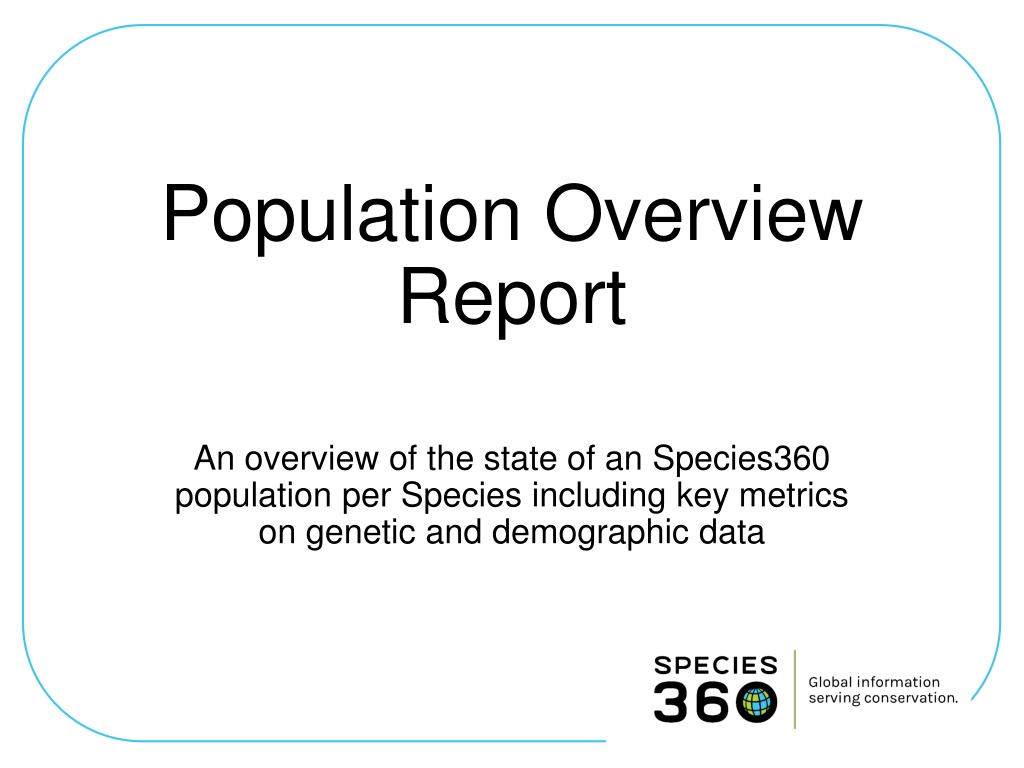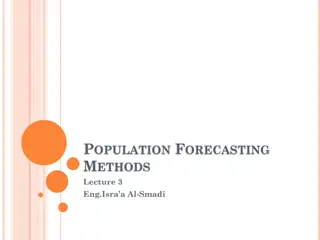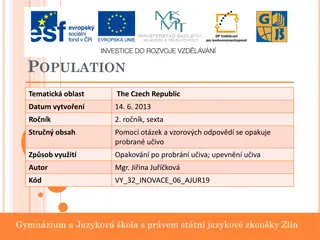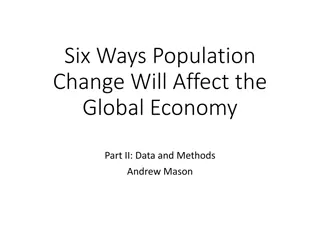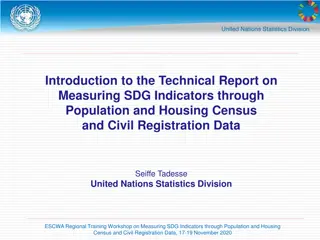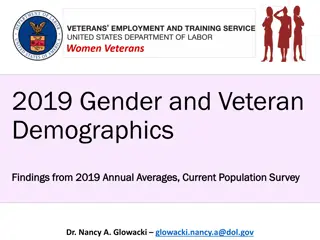Population Overview Report for Species360 Data
This report provides an in-depth overview of the state of a specific Species360 population, encompassing key metrics on genetic and demographic data. It includes information on ZIMS updates, report filters, acquisitions/dispositions, live age graph, metrics, contributing founders, living individuals, living breeders, and living captive-born animals.
Download Presentation

Please find below an Image/Link to download the presentation.
The content on the website is provided AS IS for your information and personal use only. It may not be sold, licensed, or shared on other websites without obtaining consent from the author.If you encounter any issues during the download, it is possible that the publisher has removed the file from their server.
You are allowed to download the files provided on this website for personal or commercial use, subject to the condition that they are used lawfully. All files are the property of their respective owners.
The content on the website is provided AS IS for your information and personal use only. It may not be sold, licensed, or shared on other websites without obtaining consent from the author.
E N D
Presentation Transcript
Population Overview Report An overview of the state of an Species360 population per Species including key metrics on genetic and demographic data
ZIMS Updates! This PowerPoint is up-to-date as of: November 12th2018 ZIMS is developed in an agile method This means that it is updated every two weeks, sometimes with additional releases in between! Use the link below to see if there have been any updates to this topic since the date above: http://training.species360.org/updates/ 2
Contributing Founders A count of the number of unique (wild-caught) animals that can be traced in the pedigree to today s living population. Any non-reporting institutions or missing parental data breaks the link. More Contributing Founders may be identified if more complete histories are filled in for today s living population.
Living Individuals The number of live individual animals as reported by current members Pending/In transit animals are not counted Groups are reported separately
Living Breeders The number of animals who have reproduced
Living Captive Born Living animals that were born/hatched in captivity
Percent Estimated Birth Dates An indicator of demographic data quality Total number of individuals = denominator Number with significant Birth Date estimates = numerator Only estimates of =/- one month or more are used
Percent Unknown Birth Date Percent of all individuals with Undetermined or Indeterminate Birth Dates Undetermined = don t know at this time Indeterminate = impossible to be known
Percent Individually Identified Sires and Dams Percent of the individuals who have a single Sire or Dam recorded Twice the number of captive born individuals = denominator Sum of Sire and Dam fields with an ID = numerator
Percent Individuals with Multiple Sires or Dams Individuals with more than one Sire or Dam recorded ZIMS allows recording percent probability Twice the number of captive born individuals = denominator Number of individuals with multiple entries for parents = numerator
Percent Individuals with MULT Parents Parents recorded simply as MULT Data migrated from legacy ARKS System MULT results in a break in the pedigree trace
Percent Animals without Recorded Birth or Capture Best case scenario for start of an animal record is a Birth or Capture from Wild. Acquisition from a non-Species360 member Number of animals in the dataset = denominator Number of animals which cannot be traced back = numerator
Percent Animals Lost to Follow Up Animals Transferred to a location for which there is no further information Institution was never an Species360 member Institution was a previous member who dropped their membership Loans Out to non-Species360 members are not Lost to Follow Up
Group Information Living Animals in Groups Number of living animals held in groups Current Founder Groups Number of current founder groups Number of Current Groups Number of non-zero groups currently held
Disclaimer These tables and figures are based on institutional data submitted to Species360, not studbook data
Any Questions? On the Population Overview Report
